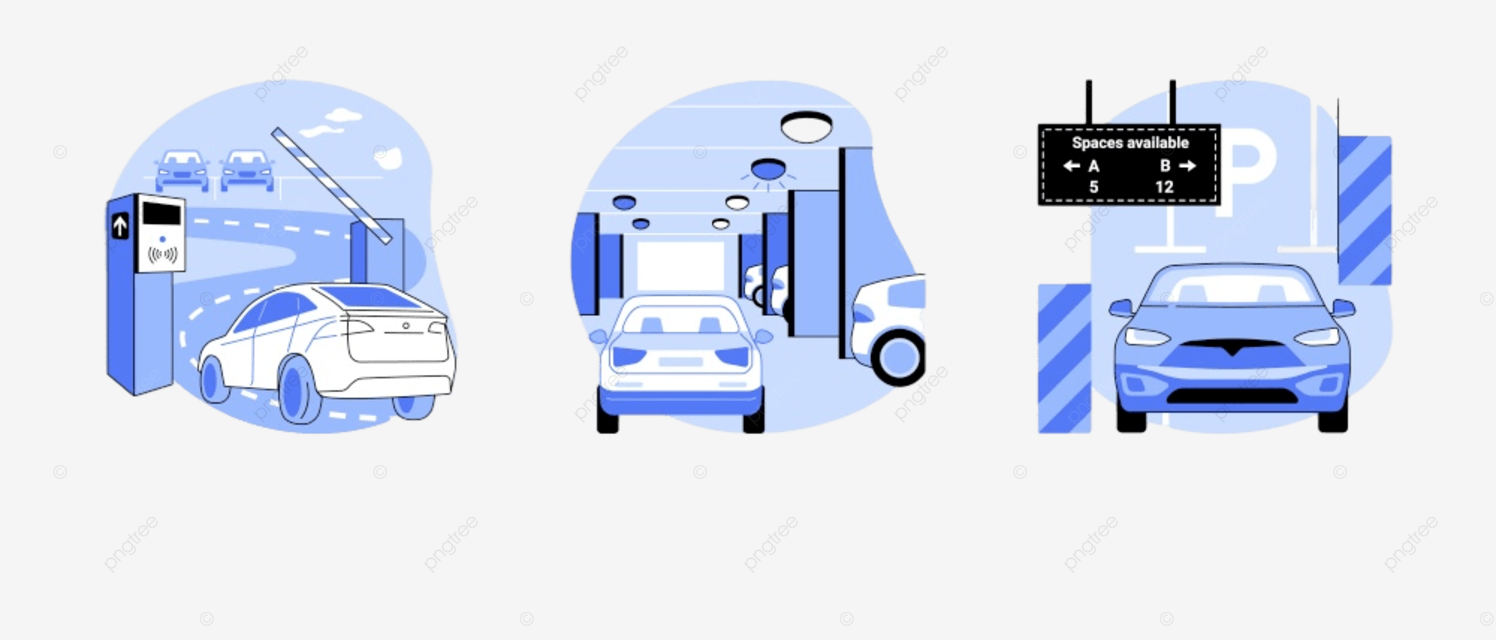It was developed to address the challenges associated with urban parking, including limited availability, traffic congestion, and inefficient use of parking spaces. Here’s an overview of how the whole system works and its key features:
- Real-Time Parking Availability: It utilizes sensors installed in parking spaces throughout the city to monitor occupancy in real-time. These sensors detect the presence of vehicles and transmit data to a centralized platform, allowing users to view parking availability in different areas of the city via a mobile app or website.
- Dynamic Parking Pricing: It incorporates dynamic pricing algorithms that adjust parking fees based on demand and availability. During periods of high demand, such as peak hours or special events, parking rates may increase to incentivize turnover and encourage drivers to consider alternative transportation options. Conversely, during off-peak hours or when parking supply exceeds demand, rates may be lowered to attract more visitors to parking facilities.
- Reservation and Pre-Booking: It allows users to reserve parking spaces in advance through the mobile app or website. This feature is particularly useful for events, concerts, or other occasions where parking demand is expected to be high. By reserving parking in advance, users can secure their spot and avoid the frustration of circling the block in search of parking.
- Navigation and Routing: The app provides users with turn-by-turn navigation and routing to available parking spaces near their destination. By guiding drivers to the nearest available parking facilities, ParkEase helps reduce traffic congestion, minimize emissions, and improve overall traffic flow in the city.
- Payment Integration: It offers seamless payment integration, allowing users to pay for parking directly through the app using various payment methods such as credit/debit cards, mobile wallets, or parking credits. This eliminates the need for drivers to carry cash or visit parking meters, streamlining the parking experience and reducing friction.
- Data Analytics and Insights: It collects and analyzes parking data to provide city officials and urban planners with valuable insights into parking patterns, utilization rates, and trends. This data can inform decision-making processes related to parking infrastructure investments, policy adjustments, and transportation planning initiatives aimed at improving overall mobility and accessibility within the city.
By implementing this system, cities can effectively manage parking resources, optimize utilization, and enhance the overall parking experience for residents, visitors, and businesses alike. As a product manager, I’m proud to have contributed to the development of a solution that addresses a pressing urban challenge and makes cities more livable and sustainable.
Tech Stack Used
The technology stack used to build this system consists of a combination of hardware and software components tailored to the specific requirements of the smart parking management system. Here’s a breakdown of the key elements of the tech stack:
Hardware Components:
- Parking Sensors: These are physical devices installed in individual parking spaces to detect the presence of vehicles. Parking sensors may utilize various technologies such as ultrasonic, magnetic, or infrared sensors to accurately detect occupancy.
- Gateway Devices: Gateway devices are installed at strategic locations throughout the city to collect data from parking sensors and transmit it to the centralized software platform. These devices often utilize wireless communication protocols such as LoRaWAN, Zigbee, or cellular connectivity to transmit data securely and reliably.
Software Components:
- Backend Infrastructure: The backend infrastructure of this system includes servers, databases, and cloud services responsible for storing and processing parking data collected from sensors and other sources. Technologies such as AWS (Amazon Web Services), Microsoft Azure, or Google Cloud Platform may be used to host and manage the backend infrastructure. AWS was used here
- Real-Time Data Processing: It requires real-time data processing capabilities to handle incoming data streams from parking sensors and update parking availability information in real-time. Technologies such as Apache Kafka, Apache Flink, were used for real-time data processing and caching.
- Mobile and Web Applications: It includes mobile and web applications that allow users to view parking availability, reserve parking spaces, make payments, and access other features of the platform. These applications are typically built using frontend frameworks such as React.js or Angular for web development and React Native or Swift for mobile development.
- Geospatial Analysis and Mapping: It utilizes geospatial analysis and mapping technologies to visualize parking availability, display navigation routes, and provide location-based services to users. Technologies such as Mapbox, Google Maps API were used for geospatial data visualization and mapping.
- Payment Processing: It integrates with payment processing systems to facilitate secure and seamless payment transactions for parking fees. Payment gateways such as Stripe, PayPal, were integrated into the platform to handle payment processing.
- Data Analytics and Insights: It incorporates data analytics and business intelligence tools to analyze parking data, generate insights, and provide reporting capabilities to city officials and stakeholders. Technologies such as Apache Spark, Tableau and Power BI were used for data analytics and visualization.
Overall, the technology stack used to build this system is designed to be scalable, reliable, and secure, enabling efficient management of parking resources and enhancing the overall parking experience for users and city residents.




